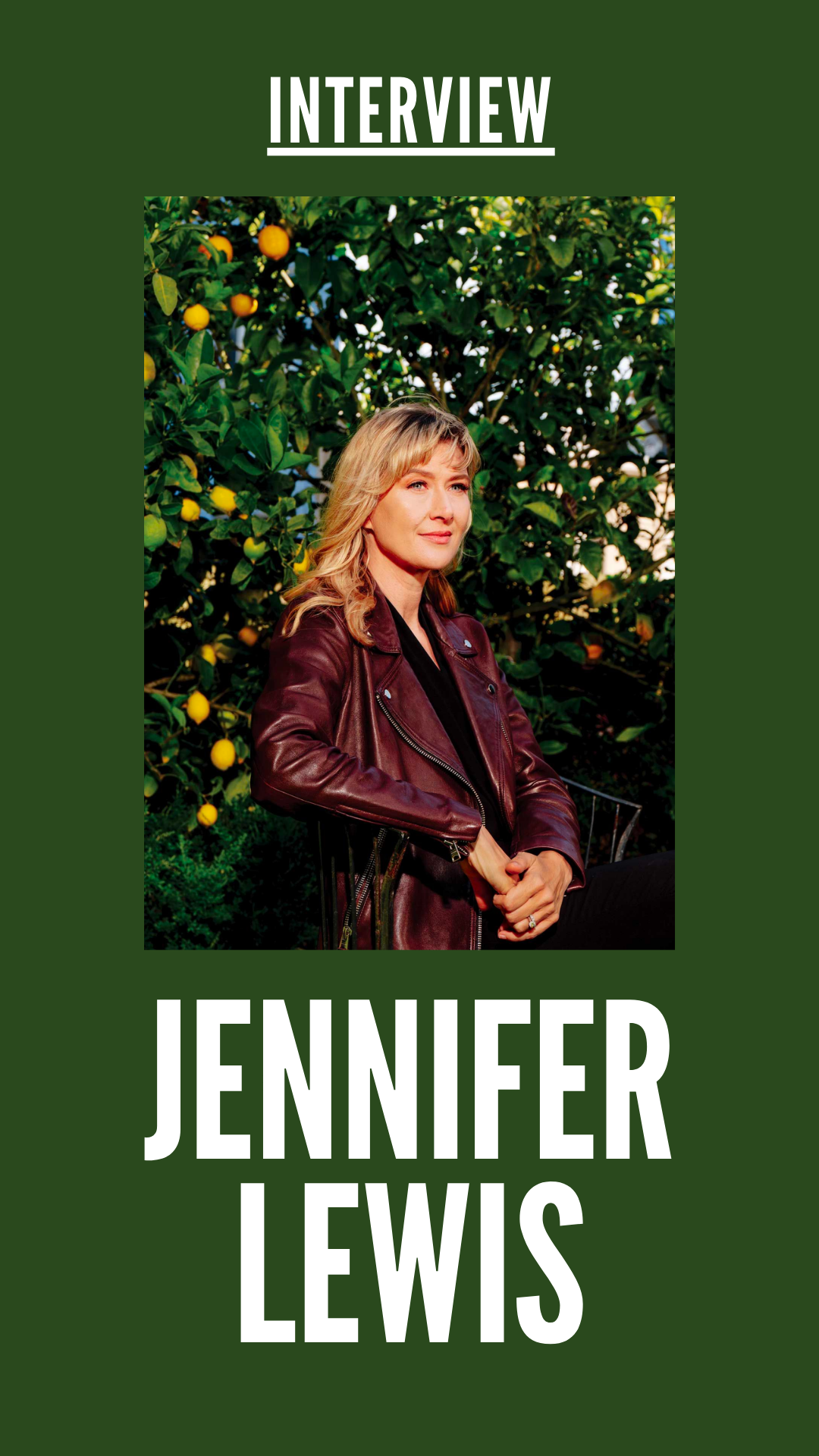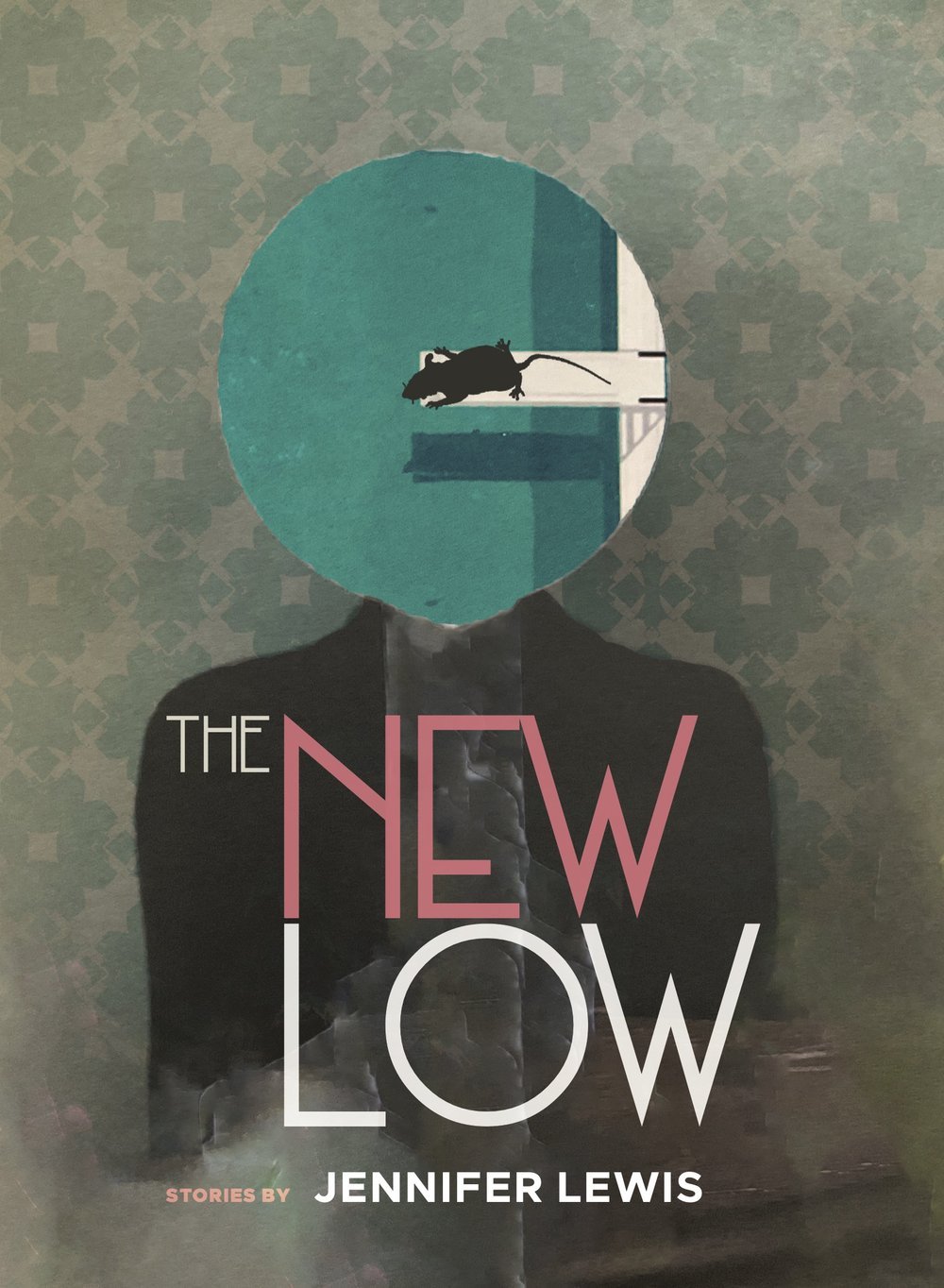INTERVIEW: Jennifer Lewis by Kathleen J. Woods
The New Low
Jennifer Lewis
Nomadic Press
Interview by
Kathleen J. Woods
In recent months, my favorite books have been those centered in place and character, precisely evocative of the many distinct, contradictory ways a person moves through a particular moment, through a particular space. For example, how many moods must one person pass through during a single night out at the bar? How many selves do they inhabit, deny, or feel reflected, in each conversation? In each reaction to the next drink, the next song?
And so, I’ve loved my reread of Lorrie Moore’s Birds of America and my introduction to Eve Babitz’s Slow Days, Fast Company. I’ve loved 100 Boyfriends by Brontez Purnell and Self-Portrait With Ghost by Meng Jin. And what a delight now to love Jennifer Lewis’s debut short story collection, The New Low.
“Put a Teat in It!”, the first of these largely interlocking short stories holds within it one of the thematic “thesis statements” of the whole book. Wondering why she finds her “cow” time pumping breast milk so scary, the narrator muses, “Maybe it’s because you realize: You are something other than you think you are. What else am I that I don’t already know?”
Within and across these largely interlocking stories, characters repeatedly come up against the boundaries of their self-awareness. And what use is too much self-awareness anyway? Every friend, family member, or lover sees these characters differently–with all the human variations of critique and compassion. And every reader will too.
Cofounder and editor of Red Light Lit, Jennifer Lewis is a treasured part of the Bay Area writing community. It was an enormous pleasure to talk with her about the shifting self, the art of the short story, and all their textures within The New Low.
_____________
Kathleen J. Woods: This book is full of references to other works of literature—the short stories of Cheever, Grace Paley’s fantastic “Wants,” Mary Gaitskill’s “Secretary,” etc. In your introduction, you write, “Throughout the collection, literature and film as a means of intellectual, artistic, and social connection are common threads weaving in and out of conversation.” Can you speak more to your experience—and your characters’ experience—of connecting through literature?
Jennifer Lewis: I wrote a lot of these stories a long time ago—a time when I was really hungry from intellectual connection. I had three young kids at home, and while I appreciated the community of mothers around me, all the conversations about children’s tylenol or whatever didn’t keep me super engaged, and I knew I found a lot of enjoyment in talking about art, in making art.
So, through intentional work at weaving it in, this craving for connection through art showed up in these stories. In “O Youth and Beauty,” we have the narrator trying to connect to a friend who used to be bookish. And in “Don’t Feed the Pigeons,” we have a character maybe looking for intellect in all the wrong places. This character is hungry for conversation around artists, but she’s going out to bars to try to find this intellectual satisfaction, and in exchange for some of thes stimulating conversations, she’s mistaken for being flirtatious.
KJW: Yes, in that story you just mentioned, “O Youth and Beauty,” the narrator, Emma, and her friend, Mae finally do have a conversation about Cheever. And Emma muses, “Mae and I, as ridiculous as we were, had conversations that mattered.”
But, later in the collection, in the short story “Temporary Thing,” a younger Mae says, “Perhaps only art has meaning. Yet… I wonder if even art is an illusion. To keep us going, you know. To believe that something we do is important.”
This longing for and distrust in meaning-making continues throughout the collections. I was struck also by another character, much later in the collection, reflecting on the need to “fill the hours with something” other than substances, while other characters do their best to hang on through parties, conversations, cocktails, headstands, drugs.
Can you talk a bit about that desire for meaning your characters share?
JL: It’s a question I think everyone asks: What is meaningful? Maybe, at the end of the day, it is how you fill your time, and how you can fill the hours in a deliberate way. But I also don’t want to feel as though I have to be productive all the time. Maybe, sometimes, connecting with the person you’re with is the most meaningful thing to do in that moment.
A lot of the book is about how hard it can be to be present with the one you’re with, in the moment you’re with them. Even when we are talking to others, we are also in this ongoing internal dialogue, dealing with other things in our own hearts and minds. We’re always spread thin in some ways, and I try to show that in my characters.
Maybe because of that, I do think community for artists is really important. I feel really excited when talking with other artists, and I’ve discovered that curating art is somethingI feel really aligned in. A lot of the search for meaning is the search for that good feeling place, for something you love.
KJW: To shift gears into craft just a bit, I was really thrilled by some of your surprising point of view slides and swaps, especially toward the end of stories. Sometimes we move into the perspective of a character we’ve seen very little of, or perhaps one we’ve already formed unflattering or narrow ideas about, and these compassionate, dynamic POV shifts open up the story in new ways.
JL: Yes, I’m obsessed with point of view!
KJW: Oooh, yay!
JL: And very often, I’m told I can’t do this, that I can’t end the story with a character if it’s not “their story.” And I always want to try to prove people wrong. RIght now, I’m writing a novel that I hope can work like The Great Gatsby, or Less, where one character is presented as the center of the story, but the story is told by someone else. And Jean Rhys does little POV shifts too, and it’s my favorite
What I’m obsessed with is how people perceive other people, and how each person perceives every other person differently. In that way, we all inhabit multiple personalities, presenting new facets of ourselves in different dynamics, with different people.
KJW: I can’t believe you had to fight for these POV shifts! Observations of the main characters are definitely part of “their” stories! And, as you say, these POV shifts capture how a person forms identity in response to how others are reflecting their “selves.”
JL: And writing so many of those moments is just fun!
That said, sometimes I do agree with someone telling me I can’t do the POV shift, and that’s usually when I still haven’t done it right. I haven’t mastered it yet. But I keep trying, I massage it more, but I trust myself, and I fight for it to work.
Like, I’m currently writing this novel in the voice of man describing this actress. I want it unreliable. I want his version of her, not her version of herself. We all have these versions of people that we really think are true, while they may or may not be.
KJW: One small point of view slide that I absolutely love happens in the story “Tasting Menu,” which centers on an adult, successful, confident and glamourous Mae reuniting with an old friend, who feels self-conscious in comparison. There is tension between them throughout the story, and then eventually they go dancing.
You write, “Even in the silly corset, Mae was still the same moon-faced girl. Lucy gave her a hug so tight that they almost fell onto the sticky floor. Mae’s body remembered her friend’s embrace.”
Can you talk about your choice to have the memory come from Mae’s body, not just Mae?
JL: I think of myself as a storyteller, which means that even when I’m trying to recount something that happened in my life, I want to make the story good. So I exaggerate, or I change my perspective, or I tilt the details just a little to make the story better. We all do this. We’ve all had the experience of listening to friends and knowing that that friend is leaving out details that might make them look bad. And we shape stories in our minds and memories too.
I teach yoga, and I’ve done yoga for like 20 years. Plus, I have a meditation practice and I have taken a lot of somatic classes. So, I’ve learned a lot about how touch, smell, feel, etc. can trigger memories that the mind has forgotten. In some ways, the body knows more, holds more wisdom—has more undeniable memory than the mind can.
We all have bodies, and our characters have bodies, and when we try to feel that body with our characters, we also help our readers feel like they are with them in the scene.
I also hope that, in stories like “Put a Teat in It,” readers can see women—but not just women—finding our power in our bodies. And connecting with that power within, connecting with a greater inner confidence and voice.
KWJ: The New Low is full of so many wonderful, immersive details and sharp observations. Do you have a particular practice of observation and memory that gives you a well to draw from as you write?
JL: I definitely have that experience we all have, of a million dings going off, of feeling fragmented. In fact, I feel like the fragment form has taken off in literature because it reflects the fragmented way we receive information from texts, podcasts, songs, YouTube, reading. It can feel like so many of our thoughts are this collective of thoughts. How do we even know what is us any more?
Like I mentioned, I meditate every day, and I try to meditate twice a day. A lot of that practice is trying to call my energy back to myself. To see if I can locate what is actually my original thought or my perspective.
A lot of that work is also taking a panoramic view when possible, and trying to write fiction from a place that is more objective. This even connects to some point of view movements that surprise me. For example, in the story “Saturday Mourning,” we hear from one character seeking an abortion and one character protesting at the clinic. I was almost trying to be a journalist of this really charged topic, and as objective as one could possible be. It was a challenge!
I don’t know where I get all these little craft challenges, but for so many of my stories, the structure or “plot” movements will come from something new I want to do. For example I might decided I want to experiment with escalation, or a monologue.
I do think you have to allow yourself to get weird, or decide to go off on some detours and try something. Sometimes the detours are what makes the writing good, but you don’t necessarily know that until you take like 10 detours that everyone thinks are terrible. But to get to that good detour, you have to go off the path a little bit.
KJW: I really love the endings of the stories in this collection. I wonder how you approach endings, and how you deal with the detours on the way.
JL: I believe in the beginning, middle, and end of a story. I want the ending to be surprising, to make you think. In part, approach endings thinking about the complexity of choices, and how we can create tension in letting characters want multiple contradictory things, and how that can naturally lead to that element of surprise.
Ultimately, I am a servant of the story. I don’t care about the truth or the characters. I want whatever ending serves the story best.
The ending for “Tasting Menu” was the most fun for me. We have Mae with her friend Lucy, and with Lucy’s husband. And it seems this couple is at odds with each other the whole night, and they are having these escalating, uncomfortable couple fights—and really the whole story is just driven by escalation. But while Mae spends so much of the story not trying to judge her old friend’s relationship, at the end of this story, Lucy and her husband are left alone to bond by tearing Mae apart.
In this, I wanted to encapsulate change and how people change, but I always wanted to make the reader doubt everyone a little bit. I want everyone on the page to be complex.
And sometimes it’s a swing and a miss. One of these stories, “Sunday Mornings,” I ended a million times, and I still don’t know if it’s the right ending. But I wanted to show a character taking some charge of her own life even at a rock bottom—and so many of these characters at a rock bottom in this collection.
I am hoping some of these characters can find that question of “What else am I?” Maybe I’m resilient. In this spectrum of humanity, we can be strong and weak.





